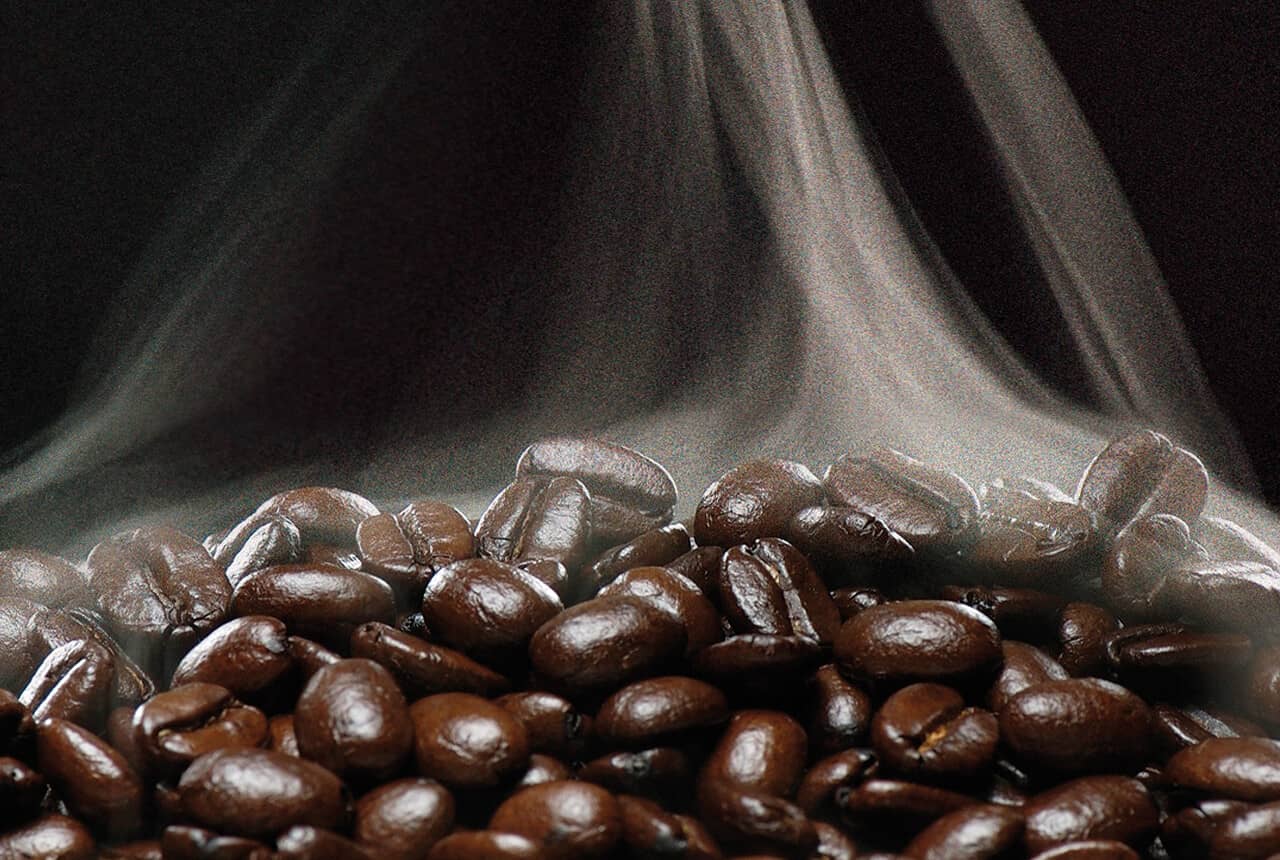- Roasting & Refinement
Viva la machina.

Karsten Suhr
Our favorite – and here we have quite a strict opinion (not to say: dour) – is the drum roaster. In fact, it is the favorite method amongst all manually working coffee people, because it allows to roast slowly and constantly. As the name already indicates, a drum rotates over a (gas) flame. The roast master can regulate the heat supply with the flame. And by regulating the ventilation of the drum he can determine how quickly the heat is emitted to the coffee. That way, the individual roasting profile of a coffee can be adjusted precisely. Acidity, sweetness, and “bitterness” are balanced and finely tuned.
We roast our Arabicas for at least 11 minutes at about 390°F. That way, the aromas can unfold nicely and develop their typical taste.
The weight loss per bean here is much higher compared to the fast roasting. We gladly accept that in favor of the taste.
Faster. Hotter. More acidic.
So, let’s take a look at the industrial methods: By roasting with hot air, a method invented in the 1970s, the beans are heated and circulated in a flow of hot air. The roast time is much shorter (2-5 minutes), because the coffee beans heat up quicker than in the drum roaster, due to the larger volume of air.
But: With this method it is much more difficult to roast all beans evenly. Meaning, they are not fully developed on the inside. The aromas cannot fully unfold and the chlorogenic acids, known for causing stomach troubles, are not completely broken down. That’s one reason why drip coffee has been having such a bad reputation.

Not our thing.
The third machine is the centrifugal roaster. It allows to roast quite a large amount of beans in a very short amount of time. The coffee is basically placed in large bowls that rotate so fast, that the beans are pressed against the walls during the heating. Then, they fall back into the center and the process starts all over again. That way, the roast time can be reduced to about 2 minutes! Which, of course, can be quite appreciated in an industrial production. Especially, because the weight loss is reduced when roasting at such a high speed – the result is more weight per bean. And because coffee is sold by weight, one can imagine that this is quite a welcome effect.
What that means for what you will have in your cup, should be cloaked in silence.



